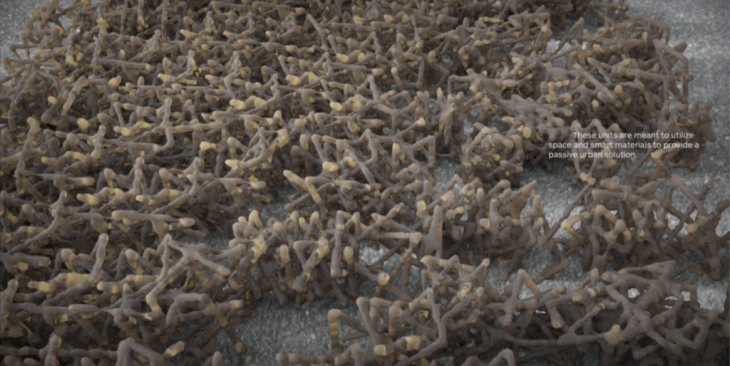COMPUTATIONAL DESIGN
Faculty: Rodrigo Aguirre
In computer science, algorithms are habitually defined as fixed and often finite procedures of step-by-step instructions understood to produce something other than themselves. Structures of logics interfacing with Data sourced from any computable phenomena.
In this course, we’ll focus on emergent design strategies based on algorithmic design logics. From the physical spaces of our built environment to the networked spaces of digital culture, algorithmic and computational strategies are reshaping not only design strategies but the entire perception of Architecture and its boundaries.
 Image Credits: IAAC Archive – Computational Design Seminar project “Porifera, Urban Sponges” by Mohamad Alchawa
Image Credits: IAAC Archive – Computational Design Seminar project “Porifera, Urban Sponges” by Mohamad Alchawa
The main tool of the course will be McNeel’s Rhinoceros v6 and Grasshopper 3d. The adoption of Rhino as the main 3D tool is due to its ability to interface with many different file formats. In many ways, Rhino will act as the bridge between many applications, 3D and 2D alike. As a complementary tool for Rhino, we’ll focus on the associative design platform of Grasshopper3d, a graphical algorithm editor tightly integrated with Rhino’s 3-D modelling tools. Unlike RhinoScript, Grasshopper requires no knowledge of programming or scripting, but still allows designers to build form generators.
During the course, we will adopt various plugins implementing Grasshopper’s features and capabilities, in order to achieve full control of complex design strategies.